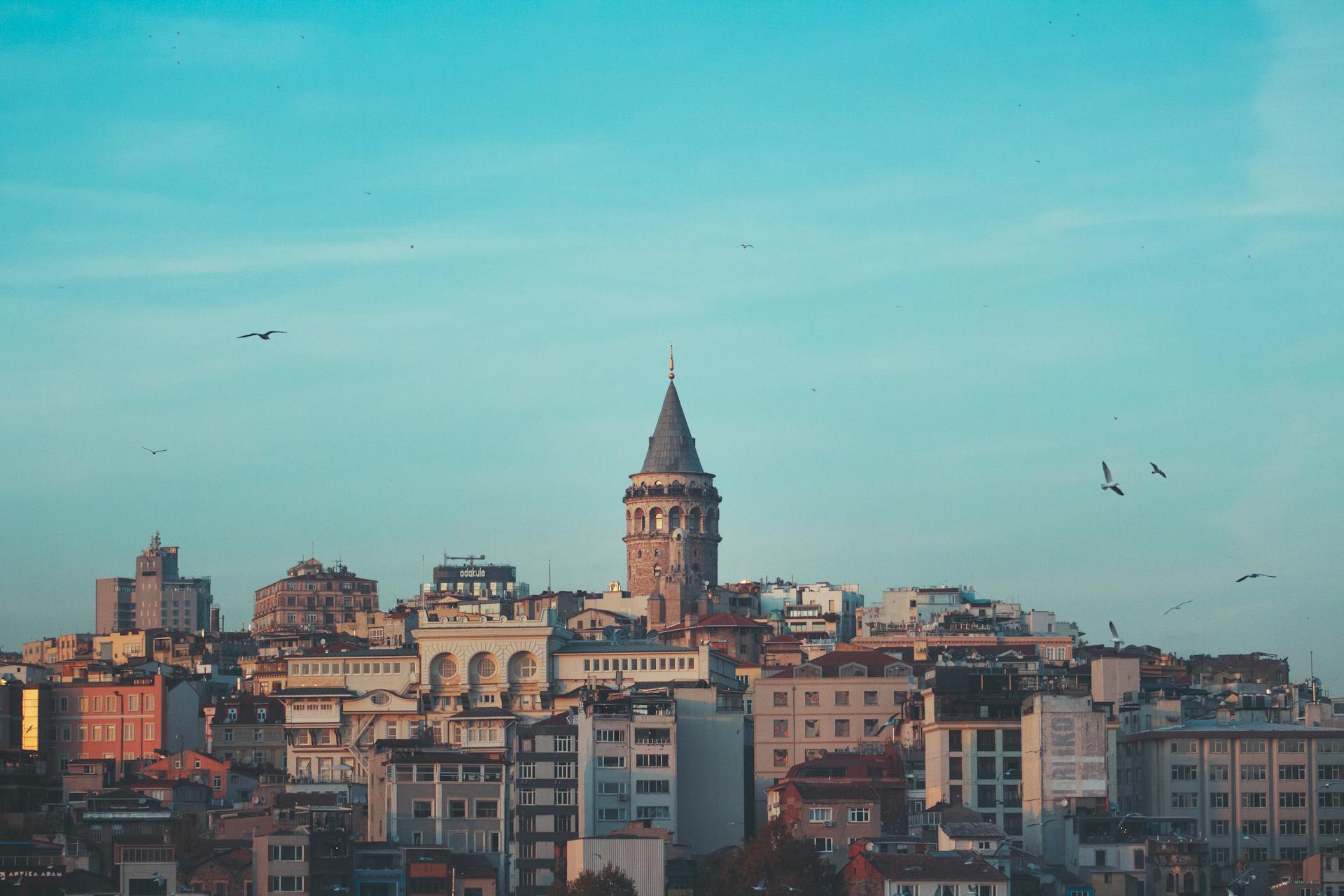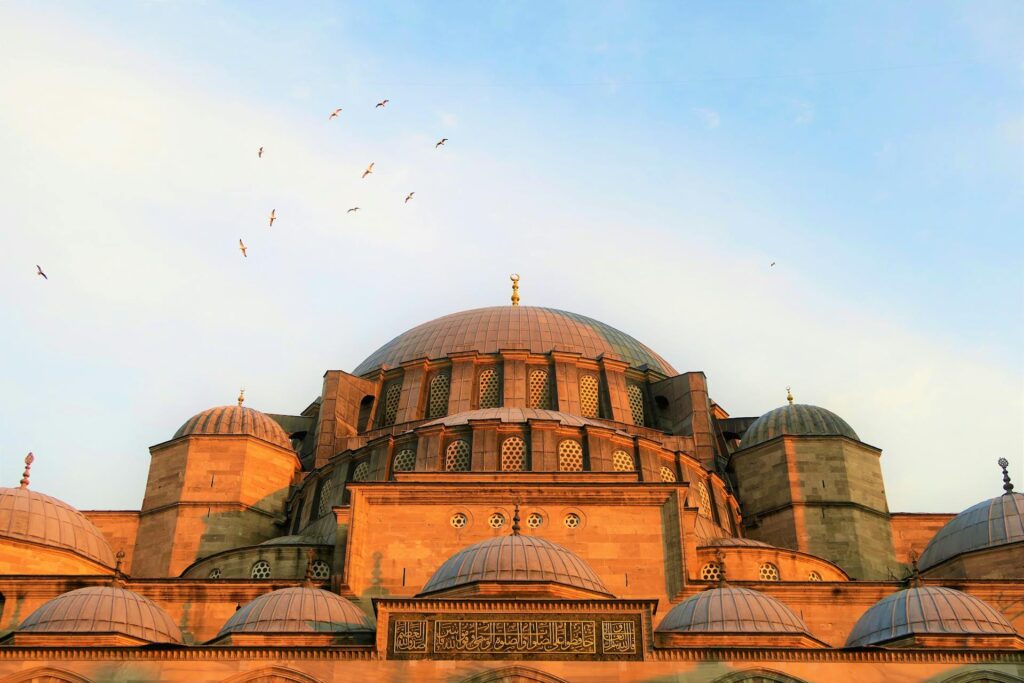Have you ever wandered through a city and felt like you were stepping back in time? Istanbul is one of those magical places where history whispers from every corner. Its skyline, dotted with domes and minarets, tells tales of the mighty Ottoman Empire. But what exactly makes Istanbul Ottoman architecture so captivating?
The Heartbeat of Ottoman Architecture
Istanbul’s Ottoman architecture isn’t just about grand structures; it’s about a legacy that has shaped the city’s soul. Walking through Istanbul, you’re greeted by the elegance of mosques and palaces that speak volumes about a bygone era. These architectural marvels aren’t just buildings; they’re storytellers.
Each dome and minaret is a piece of art, reflecting the brilliance of Ottoman architecture. The intricate designs and detailed craftsmanship offer a glimpse into the past, where every structure was built with purpose and passion. These buildings aren’t just relics; they’re a testament to the ingenuity of the Ottoman era, capturing the essence of a time when architecture was as much about beauty as it was about function.
The Magnificent Domes: A Signature of the Ottoman Empire
Domes are one of the most striking features of Istanbul’s Ottoman architecture. These awe-inspiring structures are not just about aesthetics; they serve a functional purpose too. The domes create vast, open interiors, perfect for gatherings and ceremonies, which were central to Ottoman life.
The breathtaking domes of the Blue Mosque and Hagia Sophia are more than just architectural feats. They represent the Ottoman Empire’s ambition and its endeavor to create spaces that connect earth and sky. If you’ve ever wondered why these domes leave you in awe, it’s because they were designed to do just that—capture the divine and bring it closer to us.
Minarets: The Towers of Faith
Minarets are another defining element of Ottoman architecture. These slender towers punctuate the skyline, standing as symbols of faith and community. In Istanbul, minarets aren’t just decorative; they’re functional, serving as a call to prayer and a reminder of the city’s spiritual roots.
The design of these minarets, often featuring intricate carvings and elegant balconies, showcases the artistic flair of the Ottoman craftsmen. Each minaret is a masterpiece in its own right, adding to the rich tapestry of Istanbul’s architectural landscape.
Palaces of Power: The Ottoman Legacy
Istanbul’s palaces, like Topkapi and Dolmabahçe, are more than just opulent residences. They were the epicenters of power and decision-making during the Ottoman Empire. These grand structures illustrate the wealth and influence of the Ottomans, with their luxurious interiors and sprawling gardens.
The architecture of these palaces reflects the empire’s grandeur, blending traditional Ottoman designs with influences from Europe and beyond. Walking through these palaces is like stepping into a world where power and artistry were intertwined, creating spaces that were as functional as they were beautiful.
The Blend of Cultures in Ottoman Architecture
Istanbul’s Ottoman architecture is a fascinating blend of cultures. The city has always been a melting pot, and this is reflected in its buildings. Ottoman architects borrowed elements from Byzantine, Persian, and Arab styles, creating a unique architectural language that is distinctly Istanbul.
This fusion of styles is what makes Istanbul’s architecture so unique. It’s a testament to the city’s rich history and its role as a crossroads of civilizations. The buildings tell stories of conquest and collaboration, where different cultures came together to create something extraordinary.
The Role of the Architect: Sinan’s Legacy
One cannot talk about Istanbul’s Ottoman architecture without mentioning Mimar Sinan, the empire’s chief architect. Sinan’s work is legendary, and his influence is still felt today. He revolutionized Ottoman architecture, designing over 300 structures that are still admired for their beauty and innovation.
Sinan’s ability to blend form with function is what set his work apart. His buildings, like the Süleymaniye Mosque, are perfect examples of how architecture can be both practical and poetic. His legacy is a reminder of the power of creativity and vision in shaping the world around us.
The Influence of Nature in Design
Nature played a significant role in Ottoman architecture. Buildings were designed to harmonize with their surroundings, using natural materials and incorporating elements like courtyards and gardens. This connection to nature is evident in the serene atmosphere of many Ottoman structures.
The use of natural light, water features, and greenery created spaces that were not only beautiful but also calming and inviting. This focus on nature is one of the reasons why Istanbul’s Ottoman architecture feels so timeless and enduring.
The Symbolism Behind the Structures
Every element of Ottoman architecture carries meaning. From the layout of a mosque to the decoration of a palace, symbolism is woven into the fabric of these buildings. Understanding this symbolism adds another layer of appreciation for the architecture.
For example, the use of geometric patterns represents infinity, while floral motifs symbolize the paradise promised in the afterlife. These symbolic elements remind us that Ottoman architecture is not just about form; it’s about conveying deeper messages and connecting with the divine.

The Artistry of Tiles and Calligraphy
Tiles and calligraphy are integral to Ottoman architecture, adding color and detail to the grand structures. The intricate tilework found in places like the Rustem Pasha Mosque is stunning, with vibrant patterns that bring walls to life.
Calligraphy, often featuring verses from the Quran, adds a spiritual dimension to the architecture. These artistic elements are a testament to the skill and creativity of Ottoman artisans, who turned buildings into canvases of expression.
The Legacy of Ottoman Mosques
Ottoman mosques are some of the most iconic structures in Istanbul. They are not just places of worship but community centers that have played a central role in the city’s life for centuries. The design of these mosques, with their spacious interiors and serene courtyards, reflects the importance of community in Ottoman culture.
The Blue Mosque, with its six minarets and stunning blue tiles, is a masterpiece of Ottoman architecture. It’s a reminder of the empire’s dedication to creating spaces that inspire and uplift the human spirit.
The Impact on Modern Architecture
The influence of Istanbul’s Ottoman architecture extends beyond its borders. Modern architects often draw inspiration from the elegant lines and harmonious proportions of Ottoman design. This enduring legacy is a testament to the timeless appeal of the architecture.
While some might argue that there’s a problem with modern architecture straying too far from classical aesthetics, the Ottomans’ ability to blend beauty with functionality continues to inspire architects around the world.
The Connection to Other Architectural Wonders
Istanbul’s Ottoman architecture shares connections with other architectural wonders globally. The grandeur of the domes and the intricacy of the designs can be seen in places like the Sheikh Zayed Mosque and St. Peter’s Basilica.
These connections highlight the universal language of architecture, where different cultures and styles influence and inspire each other, creating a rich tapestry of human creativity.
The Preservation of Ottoman Heritage
Preserving Istanbul’s Ottoman architecture is crucial for maintaining the city’s historical and cultural identity. Efforts to restore and maintain these buildings ensure that future generations can experience the beauty and history that these structures embody.
This preservation work is ongoing, with many organizations dedicated to protecting Istanbul’s architectural heritage. Their efforts ensure that these magnificent buildings continue to tell their stories for years to come.
Experiencing the Magic of Istanbul
Visiting Istanbul is like stepping into a living museum. The city’s Ottoman architecture offers a glimpse into a world where art and culture were revered, and where every building was designed with intention and care.
Walking through Istanbul, you can’t help but feel the magic that these structures exude. It’s a reminder of the power of human creativity and the enduring legacy of the Ottoman Empire.
The Future of Architectural Exploration
As we look to the future, the exploration of architectural styles continues to evolve. Istanbul’s Ottoman architecture serves as a reminder of the beauty and complexity that architecture can achieve. It’s an inspiration for architects and enthusiasts alike to explore new possibilities and push the boundaries of design.
For those interested in how architectural exploration can manifest in different times and places, the architecture of Paris and the innovative designs of the 21st century offer fascinating comparisons.
Conclusion
Istanbul’s Ottoman architecture is a treasure trove of history, artistry, and innovation. The domes, minarets, and the magic in between tell stories of a vibrant past and an enduring legacy. These structures are not just buildings; they are symbols of a culture that valued beauty, faith, and community. As we continue to explore and appreciate the wonders of architecture, Istanbul stands as a testament to the timeless allure of human creativity.

Recent Posts
15 Floor Plan Graphic Styles That Will Elevate Your Presentation Game
The Role of Shadows in Architectural Storytelling
When Furniture Becomes Architecture: Blurring the Line